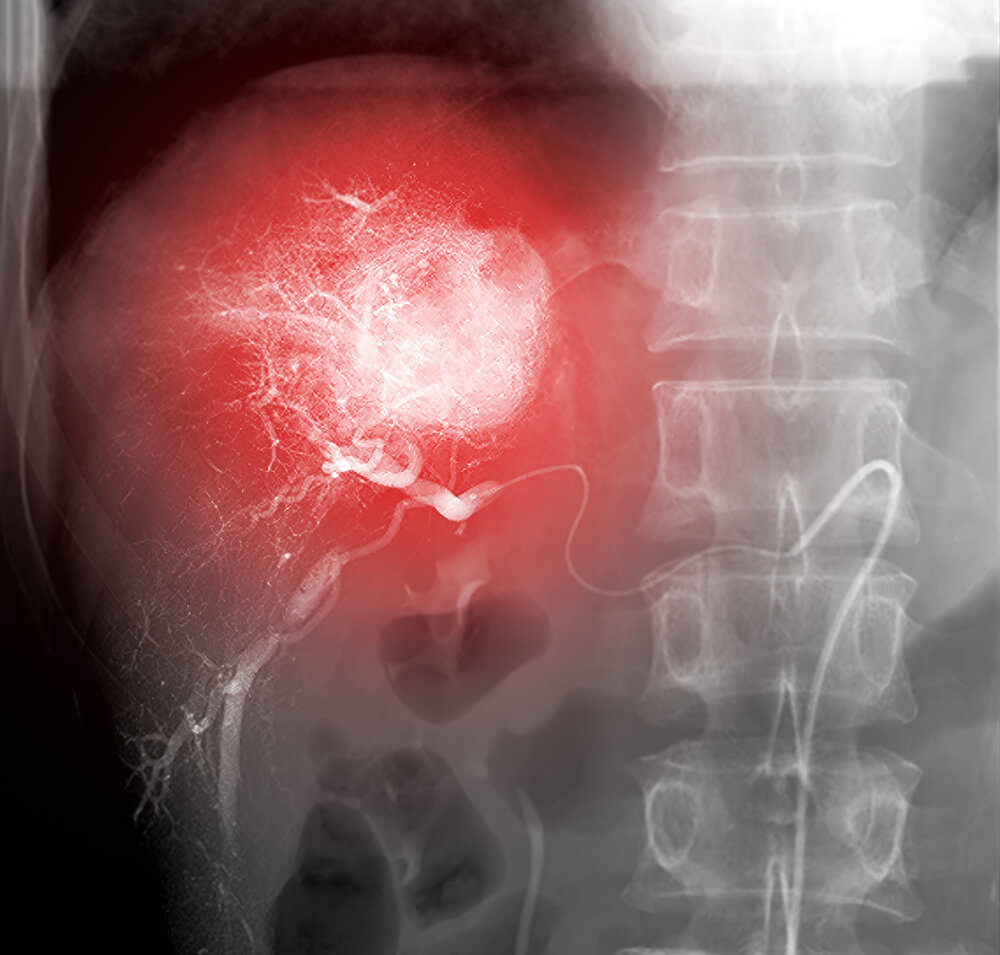
What is chemoembolization?
Transarterial chemoembolization is a minimally invasive procedure to treat certain cancers within the liver. It is a nonsurgical approach performed by the interventional radiologist who will deliver a combination of chemotherapeutic medications into the arteries supplying the tumors followed by an embolic agent to trap the chemotherapy within the tumor.
What kind of cancers can be treated by chemoembolization?
- Primary liver cancer (hepatocellular carcinoma)
- Cholangiocarcinoma
- Metastasis from:
- Colorectal cancers
- Carcinoid/neuroendocrine tumors
- Primary kidney cancer (renal cellular carcinoma)
- Uveal Melanoma
- Certain soft tissue cancers (i.e. sarcomas)
- Other vascular cancers
What are the benefits of chemoembolization?
Chemoembolization is a procedure designed to limit the growth of certain cancers of the liver or even cause them to shrink. In effect, this potentially allows for normal healthy liver tissue to be preserved, allowing the patient to maintain a relatively normal quality of life. Additionally, the medications are delivered directly into and trapped within the tumor, decreasing the exposure of the rest of the body by the chemotherapeutic drugs, limiting side effects commonly seen with systemic infusion of chemotherapy.
What happens during and after the procedure?
The procedure is performed in a state of the art angiography lab equipped with both fluoroscopic and ultrasound imaging. Using these two types of medical imaging, the interventional radiologist will perform a detailed angiogram of the liver to map out the arteries supplying the liver and the tumors within the liver. This is performed by accessing another artery, usually within the groin, and injecting contrast (dye) directly into those arteries. Once the artery or arteries supplying the tumors are identified, the chemotherapeutic medications and embolic agents are infused directly into the artery or arteries.
Afterwards, the patient will be watched overnight within the hospital and given around the clock nursing care to treat common symptoms of abdominal tenderness and nausea after the procedure, with the full expectation of going home the next morning.
What are the risks of chemoembolization?
With any procedure performed in the hospital, there carries a risk of bleeding and infection. Additional risks include reactions to contrast and medications used in the procedure, including the chemotherapeutic mixture, that could potentially cause injury to the liver or kidneys.
How effective is chemoembolization?
In more than two-thirds of cases, tumors treated with chemoembolization have been shown to stop growing or even become smaller. Additional treatments can be performed to further control the disease. Every patient is unique and each treatment is tailored to the specific patient and tumor. The procedure works best in patients who have liver predominant disease with otherwise good function of the liver and kidneys.
